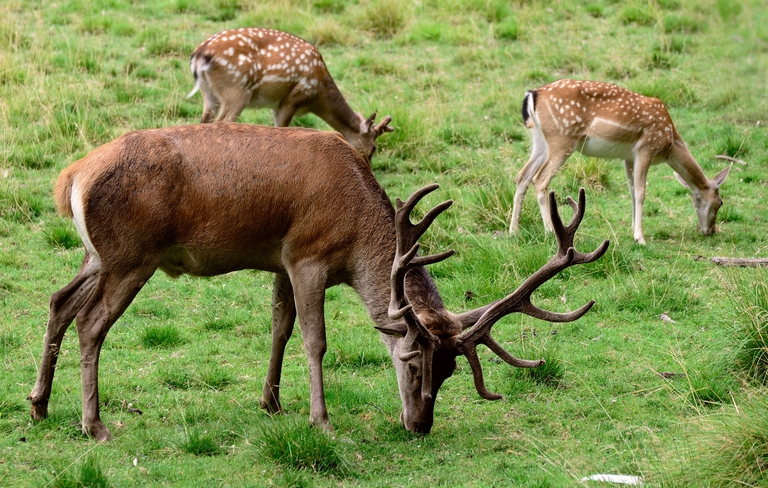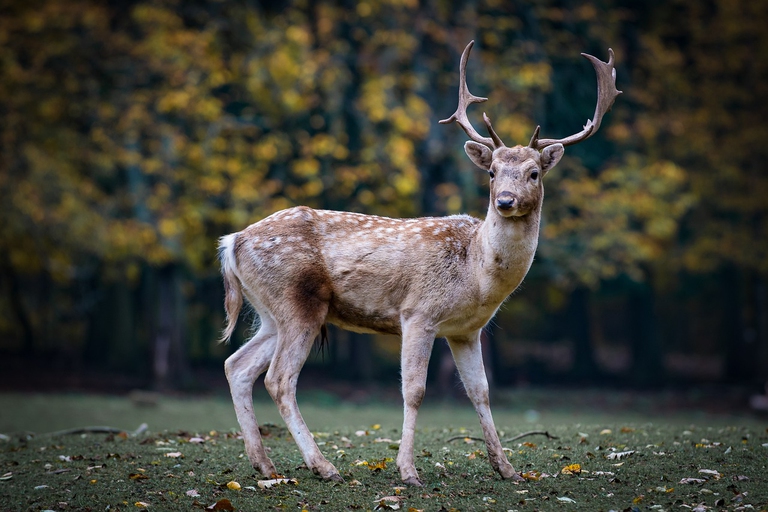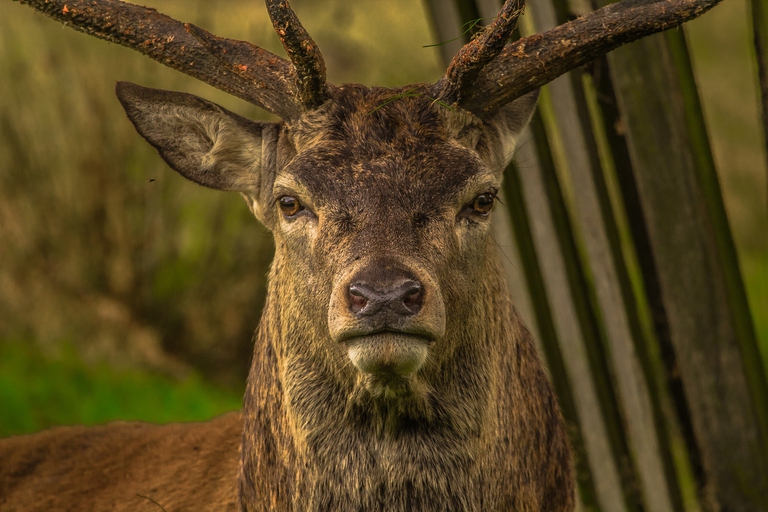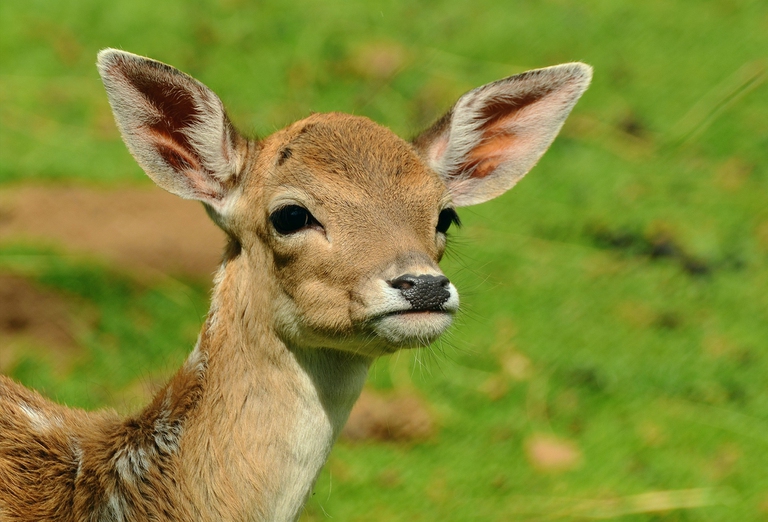https://www.lifegate.it/il-cervo-in-italia-e-in-pericolo
- |
- Deer in our country can become an endangered species like other wild animals.
- In fact, poaching and indiscriminate hunting are decreasing the number of specimens present in the area.
- The story of the Bambotto deer, the darling of a mountain town, killed by a young hunter, is the most convincing evidence of this.
- What is being done in Italy to preserve deer?We asked the experts.
The deer in our country could soon become an endangered animal.And the killing of Bambotto, who was the darling and symbol of the country that hosted him as a child, represents the tip of the iceberg.Yet deer were once widespread in our country.The population was, however, the subject of an intense withdrawal, to the point that at the end of the years ’40 specimens were found only in some Alpine localities on the border with Austria And Slovenia, at the Mesola Forest in the province of Ferrara and in Sardinia. Starting from the years ’50 Numerous reintroduction operations have been launched which have allowed this ungulate to return to many of the areas where it was once mostly present.The interventions were carried out mainly within protected areas.Today the deer is present throughout the Alpine range and in a large portion of the northern Apennines, with groups residing in the area of Pollino and of Silas. The death of Bambotto, killed by a young hunter's gun because he showed "aggression", demonstrates however how wildlife in our country is the object of systematic destruction and a series of wrong choices on the part of those who should care about it well-being and diffusion.And, as the biologist Mauro Belardi of the Eliante cooperative, sometimes it is precisely an excessive confidence towards the wild and a lack of knowledge of the specific mechanisms of the species to which it belongs, which determines its early death.It happened with the bears in Trentino, it happens with wolves and now, with poor Bambotto, even the majestic deer becomes the victim.

The deer, an iconic species for centuries
For deer it is mandatory to use a term that is now too overused:iconic.But, in fact, the great-horned ungulate has truly been an iconic species in human history for centuries.Deer currently occupy a very vast range, ranging fromEurope until North Africa and arrives atCentral Asia, at the Siberia, to then reach the Canada they States United.In the past this animal was widespread in most of these areas, but at the beginning of the twenty-first century deer are found only in the western regions of North America, with small populations reintroduced to other areas of the continent.And, nowadays, the isolated European populations found in countries like the Greece are the result of subsequent reintroductions, with the exception of the specimens present in Parnete, who most likely represent the original population of the area.Over the centuries, however, as an emblem of banners and shields, of noble houses and victorious dynasties, the deer became, and still is, the symbol of strength, virility and the majesty of nature.
Adult males can be up to 2,55 meters.Generally, specimens from Eastern European populations reach larger dimensions, while those from the Mediterranean area are smaller (for example the Sardinian deer which almost never exceeds one quintal in weight).However, if fed abundantly, deer are able to grow well above the average size achievable by the population.The so-called noble deer which with its presence characterizes the areas of Europe and our country, owes its name to its "haughty" demeanor.With his erect neck, antlers and elegant walk he stands out from the inhabitants of the forest and becomes their designated king.It is an animal that moves lightly and elegantly in the densest bush, in the prairies at different altitudes.He is fast both in the trot and in the gallop, so much so that in full running he can reach and surpass the 60 km/h, and is agile and skilled in jumping which can sometimes reach heights of up to 2 m and more than double in length.Both males and females live in monosexual groups, with the latter also bringing with them their not yet independent cubs.Within groups, there are usually always a couple of specimens who act as sentinels while the rest of the herd feeds.During the summer, deer tend to migrate to higher altitudes, reaching the high altitude prairies, where food is present in greater quantities.And this guarantees the survival of the species.

Reproductive life and breeding
At the beginning of autumn, precisely from mid-September to mid-October, the mating season begins.During this period, the males, who usually live in small monosexual groups, separate and begin to challenge each other, eager to claim possession of the females over other suitors.The one who manages to bellow the loudest, intimidating the other deer with his cry, will prevail.The strength and power of I groan depend on the size of the animal and its living conditions.In winter the antlers are lost and the males retreat into the thick brush away from the females.The abundant spring pastures have strengthened their organism and the specimens have become vigorous and ready to set off on the long search for mates.During this period, deer abandon their usual habits and previously frequented places, becoming restless and irascible.In the mating season the deer gathers around itself 5 to 15 females, which he jealously guards, at the cost of furious fights against all rivals.Killings and injuries among males are rare:in fact, before "taking up arms" the contenders challenge each other "orally".The powerful roar of the deer (a cross between a bovine bellow and a roar) is used by rivals to understand who they are facing.Only when the vocal abilities are equal, the males face each other in an open field, but even at this point, before fighting, they carry out a series of ritual behaviors, such as starting to march back and forth along parallel lines to observe the size of the stage and the toughness of the opponent.The life expectancy of deer in the wild is between 10 and i 15 years, but in captivity they live happily beyond 20 years.
The meat resulting from the slaughtered animals is normally traded and is sold to restaurants, butchers and wholesalers.It often also comes from foreign markets, where deer hunting is practiced with fewer restrictions (an example is that ofHungary).In Italy there are few deer farms.They are located in Veneto, Friuli And High Adige.Breeding requires the granting of special permits and is therefore not within the reach of all livestock farmers.In other nations – like the Swiss – the breeding of these animals is more widespread and deer meat is more easily available (in the country there are, in fact, 300 farms and about 12.000 garments are intended for human consumption).

The deer in Italy
Poaching, indiscriminate hunting, road accidents... here are some of the biggest dangers for deer in our country.We spoke about the current situation of the species with Gianluca Catullo, species and habitat manager of WWF Italy. Here's what he told us.
- What is the situation of the species currently on the peninsula?
- The deer was once widespread in our country.However, the population was the subject of intense sampling, to the point that at the end of the 1940s the deer could only be found in some Alpine locations on the border with Austria and Slovenia, in the Mesola Forest in the province of Ferrara, and in Sardinia.Since the 1950s, numerous reintroduction operations have been launched which have allowed the deer to return to many of the areas where its presence was once certain.The interventions were carried out mainly within protected areas.Today the species is present throughout the Alpine range and in a large portion of the northern Apennines, with nuclei residing in the Pollino and Sila areas.
- What species of deer are present in Italy?
- In Italy there are two native subspecies:the Sardinian deer (Cervus elaphus corsicanus), saved from extinction in the 1980s thanks to a WWF campaign which led to the purchase of the Monte Arcosu area, which later became a WWF oasis, and the Italian deer (Cervus elaphus italicus) present exclusively within the Mesola Forest.This last subspecies is the only native peninsular deer that has survived to the present day.The reintroduction interventions of the species in Italy occurred until the 2000s.Further active repopulation interventions are not necessary today, as the species is widely distributed and continues to expand autonomously.The only exception is represented by the Italian deer, since, as mentioned, this subspecies is present exclusively within the Bosco della Mesola Nature Reserve, a protected area managed by the Forestry Carabinieri, within which there are approximately 250 individuals.
- What programs are being implemented in this regard?
- Considering the high conservation value of this taxonomic unit, in 2010 ISPRA and the Ministry of the Environment drafted the National program for the conservation of the Mesol deerto, document that defines the actions to be implemented to guarantee the protection of this subspecies.Among all, the establishment of further groups of Italian deer is the action that has the greatest degree of urgency, as it is functional to avoid the loss of the subspecies in the event of unforeseen events affecting Mesola such as, for example, an epidemic.Aware of this criticality, WWF Italy, University of Siena, Carabinieri Forestali and the Calabria Region have developed a project to establish a second population of Italic deer in the Serre Natural Park, in Calabria.Acquired the positive opinion of ISPRA, all of which made it possible to carry out two releases of the first contingents of Italian deer in 2023, the last of which was at the end of October.The project is currently still ongoing.
- How is the hunting of this ungulate regulated?
- In some regions, the deer is a huntable species and subject to harvesting through selection hunting, defined on the basis of specific killing plans.This type of hunting activity is very widespread in the Alpine arc and it is foreseeable that it may also extend to the Apennine areas.Selective hunting, if carried out on the basis of scientific criteria, can be sustainable and not affect the vitality of the populations being harvested.However, the deer has always been the lord of the woods.And preserving their presence is important to safeguard the ecosystem.Certainly, together with bears and wolves, it is one of the animals that most of all arouse emotions and evoke stories.Bambotto represented in a certain sense the connection between a community of people and wild nature.His killing occurred for reasons that appear difficult to understand and this rightly aroused dismay.On the other hand, Bambotto is also the symbol of an incorrect relationship with wild species.Providing food to animals such as deer, wolves and bears is an action to be avoided at all times.This is because it induces specimens to become confident, to lose their providential fear of man.Experience tells us that unfortunately confidant subjects inevitably become more susceptible to being killed at the hands of man.

We protect wild animals
After Bambotto's death, the initiatives of various animal rights associations multiplied to obtain a just condemnation of the hunter's action, but unfortunately to date no certain information has yet been received on the measures adopted.As in the case ofAmarena bear And of his son Juan Carrito, it is precisely the excessive trust of these animals towards humans that decrees their early end.Wild animals must be protected and helped in their environment, and not transformed into freaks without a specific identity, capable only of attracting droves of tourists and hidden advertising in the countries that host them.But at the moment man's destructive action towards animals and the nature around us is still in an active phase.An example for everyone?The habit of letting dogs run free in mountainous or hilly areas.The intrusiveness of the unaware four-legged citizens, attracted by the smells and noises of the forest that surrounds them, often leads to accidents and dangerous events that man is unable to control.Respect for the natural habitat should be privileged also and above all when going to still uncontaminated places.But, unfortunately, the lack of understanding of natural laws and the ecosystem continues to expose the weakest subjects to suffering and useless sacrifices.Will 2024 be a turning point year?We hope so, despite the destructive signals that have reached us in recent months.But hope, as we know, is the last to die.
